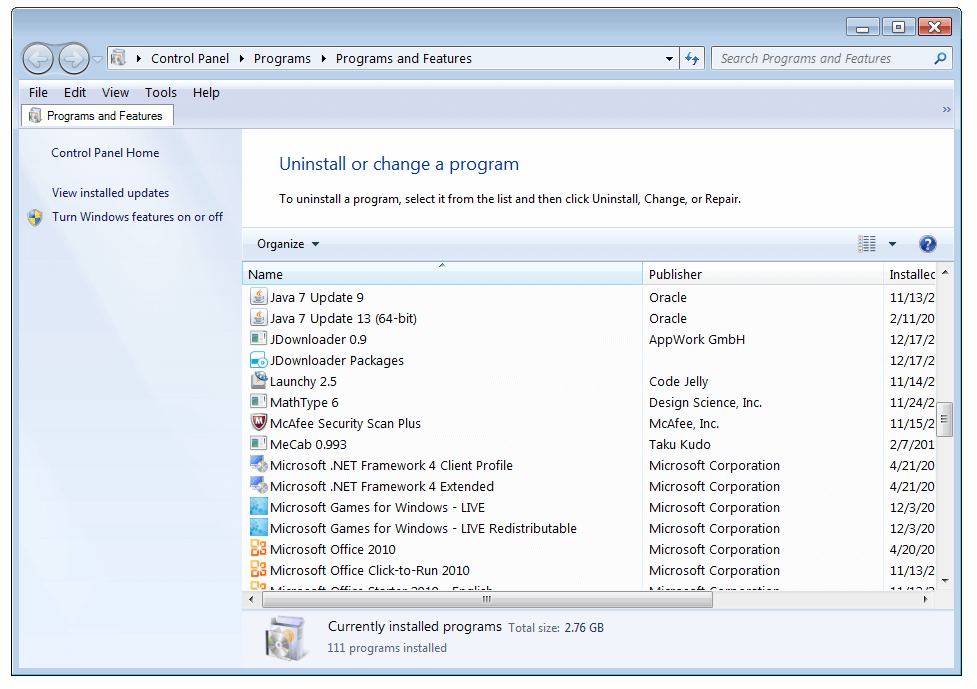Adobe DC (Reader and Acrobat both) work fine for me. Is the PDF modern PDF construction? If very old, it might not open with DC. Was the PDF made with something different than Adobe? The error 0xc0000022 is often associated with legacy applications running into compatibility problems with the latest versions of Windows (Windows 10. So far we have tried removing and re-installing Adobe. There are no indications that this computer has any infection - I can see details that there was a rootkit that caused this. The symptoms are slightly different in that the rootkit problem occurred on opening Adobe.
I've built a C# .NET app that uses the Adobe ActiveX control to display a PDF.
It relies on a couple DLLs that get shipped with the application.These DLLs interact with the locally installed Adobe Acrobat or Adobe Acrobat Reader installed on the machine.
This app is being used by some customer already and works great for nearly all users ( I check to see that the local machine is running at least version 9 of either Acrobat or Reader already ).
I've found 3 cases where the app returns the error message 'Error HRESULT E_FAIL has been returned from a call to a COM component' when trying to load (when the activex control is loading).

I've checked one of these user's machines and he has Acrobat 9 installed and is using it frequently with no problems. It does appear that Acrobat 7 and 8 were installed at one time since there are entries for them in the registry along with Acrobat 9.
I can't reproduce this problem locally, so I am not sure exactly which direction to go.
The error at the top of the stacktrace is: System.Runtime.InteropServices.COMException (0x80004005): Error HRESULT E_FAIL has been returned from a call to a COM component.
Some research into this error indicates it is a registry problem.
Does anyone have a clue as to how to fix or work around this problem, or determine how to get to the core root of the problem?
The full content of the error message is this:
System.Runtime.InteropServices.COMException (0x80004005): Error HRESULT E_FAIL has been returned from a call to a COM component. at System.Windows.Forms.UnsafeNativeMethods.CoCreateInstance(Guid& clsid, Object punkOuter, Int32 context, Guid& iid) at System.Windows.Forms.AxHost.CreateWithoutLicense(Guid clsid) at System.Windows.Forms.AxHost.CreateWithLicense(String license, Guid clsid) at System.Windows.Forms.AxHost.CreateInstanceCore(Guid clsid) at System.Windows.Forms.AxHost.CreateInstance() at System.Windows.Forms.AxHost.GetOcxCreate() at System.Windows.Forms.AxHost.TransitionUpTo(Int32 state) at System.Windows.Forms.AxHost.CreateHandle() at System.Windows.Forms.Control.CreateControl(Boolean fIgnoreVisible) at System.Windows.Forms.Control.CreateControl(Boolean fIgnoreVisible) at System.Windows.Forms.AxHost.EndInit() at AcrobatChecker.Viewer.InitializeComponent() at AcrobatChecker.Viewer..ctor() at AcrobatChecker.Form1.btnViewer_Click(Object sender, EventArgs e) at System.Windows.Forms.Control.OnClick(EventArgs e) at System.Windows.Forms.Button.OnClick(EventArgs e) at System.Windows.Forms.Button.OnMouseUp(MouseEventArgs mevent) at System.Windows.Forms.Control.WmMouseUp(Message& m, MouseButtons button, Int32 clicks) at System.Windows.Forms.Control.WndProc(Message& m) at System.Windows.Forms.ButtonBase.WndProc(Message& m) at System.Windows.Forms.Button.WndProc(Message& m) at System.Windows.Forms.Control.ControlNativeWindow.OnMessage(Message& m) at System.Windows.Forms.Control.ControlNativeWindow.WndProc(Message& m) at System.Windows.Forms.NativeWindow.Callback(IntPtr hWnd, Int32 msg, IntPtr wparam, IntPtr lparam)
StreamlineStreamline
3 Answers
Ok, reporting back to answer my own question.
The problem was directly related to the setting for 'Display PDF in browser' in Preferences > Internet.With this option checked, the problem goes away. When it is unchecked, it comes back.
Here is how we propose to handle it programmatically:
A few items to note:
- It appears according to these two articles, the key can be in two different locations in the registry (Originals vs AdobeViewer) :http://support.adobe.com/devsup/devsup.nsf/docs/51722.htmhttp://support.adobe.com/devsup/devsup.nsf/docs/53556.htm
Does anyone know if these locations are interchangeable in all versions or if based on specific versions of Acrobat the registry key is in different locations? Does Reader follow the same logic as Acrobat?
- Does Adobe use any other method to determine the 'default Adobe application for opening PDF files' other than the windows file association? I ask because if you have a non-adobe product, such as FoxIt installed as the default file association application, but are using the ActiveX control for Adobe on a machine that has both Reader and Acrobat installed, what logic is used to decide which application the COM object will talk to?
For my system (Windows XP, Adobe Reader 9.3.2) your solution didn't work (but gave me enough inspiration, THANK YOU!!)
Windows Application Error Adobe Dc Version

Thank you so much!
I just want to add that I am able to reproduce the behaviour with Adobe Reader XI too.(Windows XP 32 bit - VB.net 2005.)
The registry key is(*):
If that key value is 1, the activex component is correctly instantiated. If that key value is 0, I get the exception at form instantiation.
I was not able to find the browser integration option in Adobe Reader XI Internet properties page.
(*) I found that value on this page:http://forums.adobe.com/thread/1042774